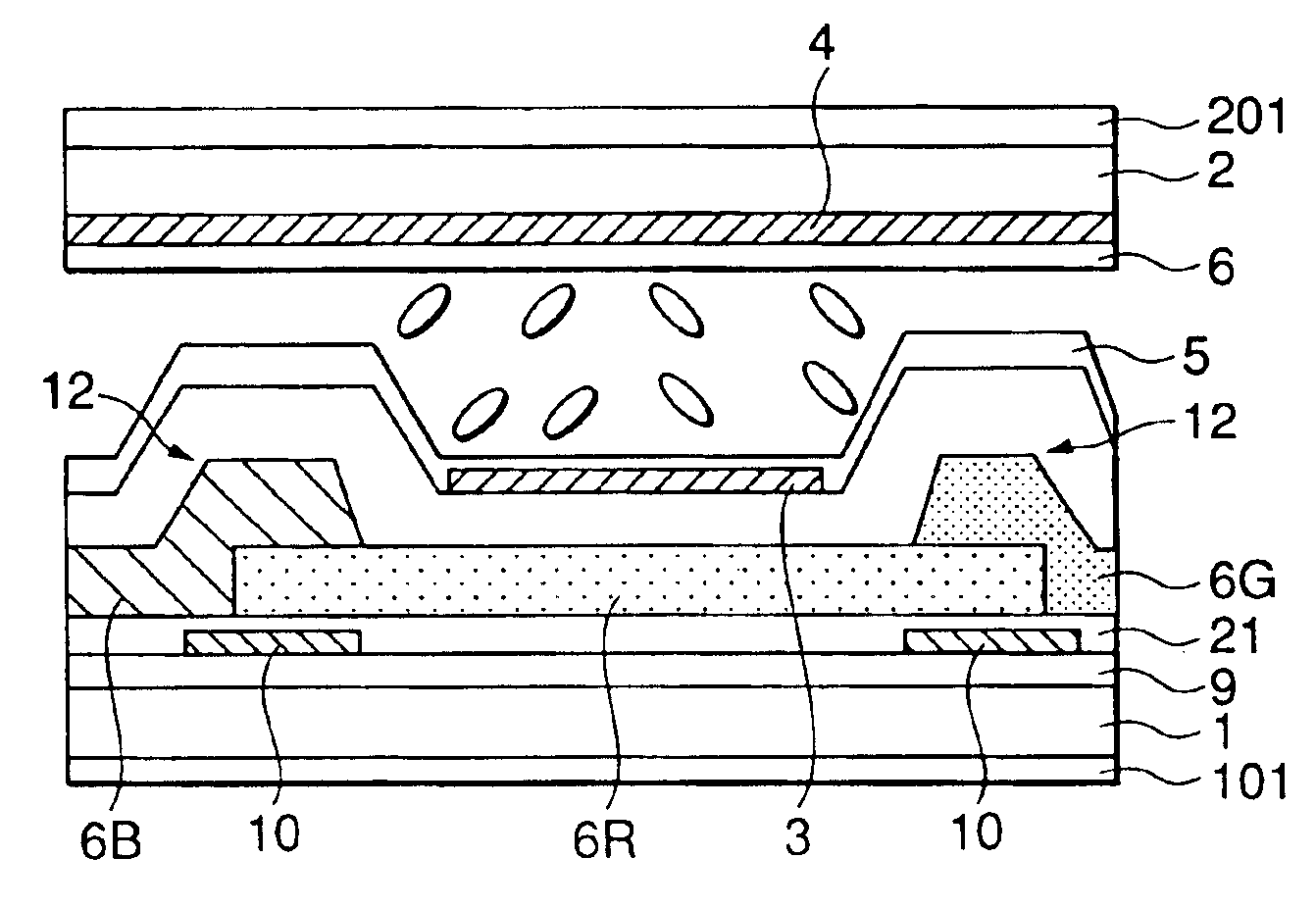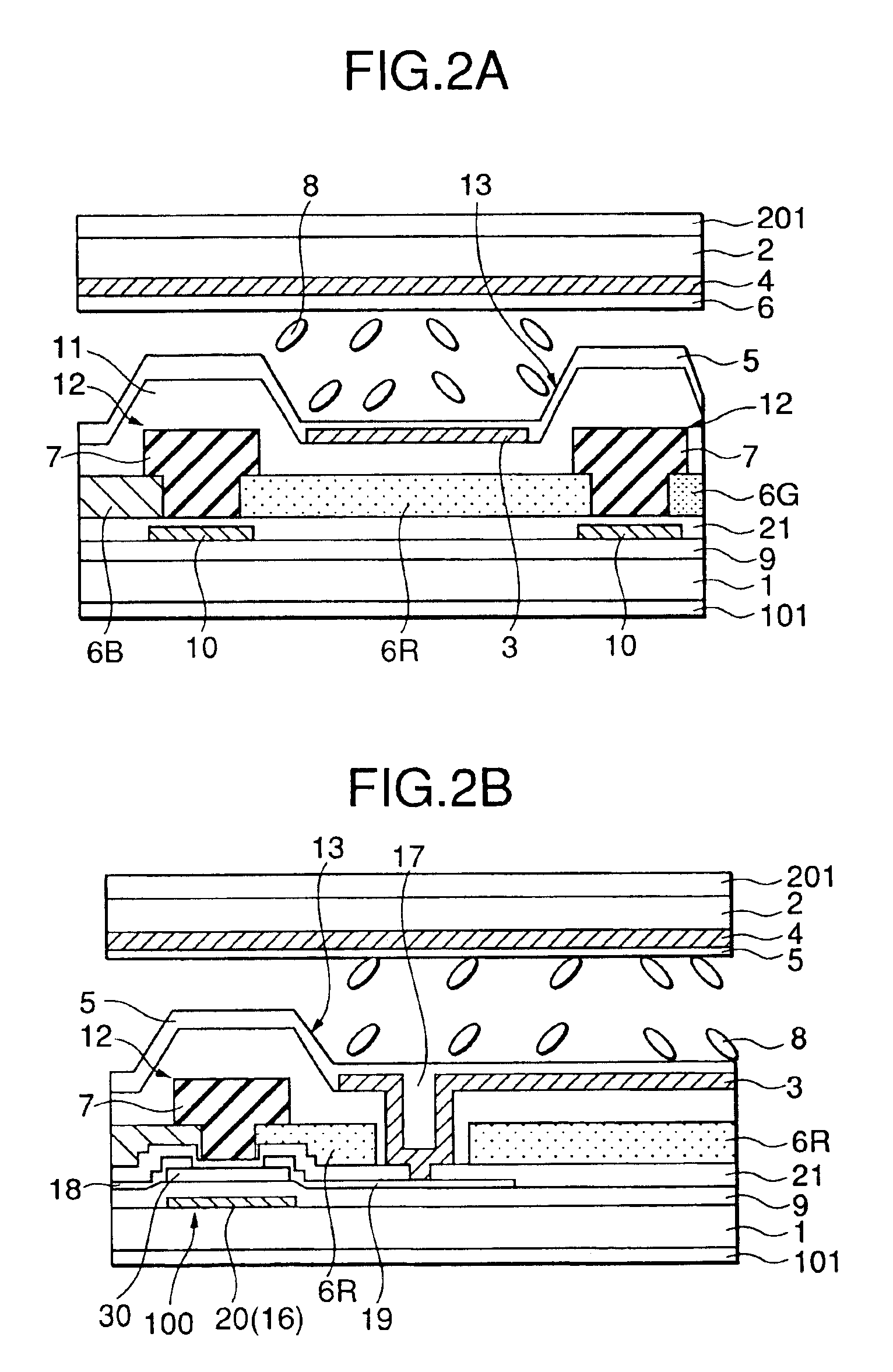Orientation division type liquid crystal display, fabrication method thereof and image display method
a technology of liquid crystal display and orientation division, which is applied in the direction of identification means, instruments, non-linear optics, etc., can solve the problems of difficult to control the initial orientation of liquid crystal molecules to a desired angle, difficult to shorten the response time, and difficult to form a clearly defined step portion. , to achieve the effect of widening the viewing field of pixel display, reducing initial orientation response time, and clarifying the pixel display
- Summary
- Abstract
- Description
- Claims
- Application Information
AI Technical Summary
Benefits of technology
Problems solved by technology
Method used
Image
Examples
embodiment 1
(Embodiment 1)
[0097]Four liquid crystal cells having the COT structures including step portions having slope length L of 2.0 μm commonly and heights H of 0.4 μm, 0.8 μm, 1.1 μm and 1.8 μm, respectively, were prepared and response times of the respective liquid crystal cells were measured while applying voltages in a range from 0 V to 5 V across the liquid crystal cells. Table 1 and FIG. 8A show the result of the measurement. Incidentally, the thickness of the liquid crystal layers, that is, the second cell gaps G2, were 4.0 μm, commonly.
[0098]
TABLE 1slope height (μm)no slope0.40.81.21.8height ratio (%)—10202845response time (ins)272.962.131.920.615.7
[0099]The height ratio in Table 1 is a ratio (%) of the height of the slope to the thickness of the liquid crystal layer.
[0100]As is clear from Table 1, the response time is substantially improved by the provision of the slope formed on the step portion. When the slope height is 0.8 μm, the response time becomes about a half of that obta...
embodiment 2
(Embodiment 2)
[0105]Four liquid crystal cells having the COT structures, 15 which are similar to those in the embodiment 1 and include step portions having slope heights H of 1.1 μm commonly and slope lengths L of 1.2 μm, 2.0 μm, 3.5 μm and 5.8 μm, respectively, were prepared and response times of the respective liquid crystal cells were measured while applying voltages in a similar range to that used in the embodiment 1 across the liquid crystal cells. Table 2 and FIG. 8B show the result of the measurement. Incidentally, the thickness' of the liquid crystal layers, that is, the second cell gaps G2, were 4.0 μm, commonly, and the tilting angle θ of the slope is represented by the following equation:
θ=tan−1(H / L)
[0106]
TABLE 2slope length (μm)no slope1.22.03.55.8tilting angle (θ)—43291711response time (ms)272.918.120.631.048.2
[0107]As is clear from Table 2, the response time to the orientation division of the liquid crystal layer is substantially improved by the provision of the slope ...
PUM
| Property | Measurement | Unit |
|---|---|---|
| thickness | aaaaa | aaaaa |
| thickness | aaaaa | aaaaa |
| length | aaaaa | aaaaa |
Abstract
Description
Claims
Application Information
 Login to View More
Login to View More - R&D
- Intellectual Property
- Life Sciences
- Materials
- Tech Scout
- Unparalleled Data Quality
- Higher Quality Content
- 60% Fewer Hallucinations
Browse by: Latest US Patents, China's latest patents, Technical Efficacy Thesaurus, Application Domain, Technology Topic, Popular Technical Reports.
© 2025 PatSnap. All rights reserved.Legal|Privacy policy|Modern Slavery Act Transparency Statement|Sitemap|About US| Contact US: help@patsnap.com



